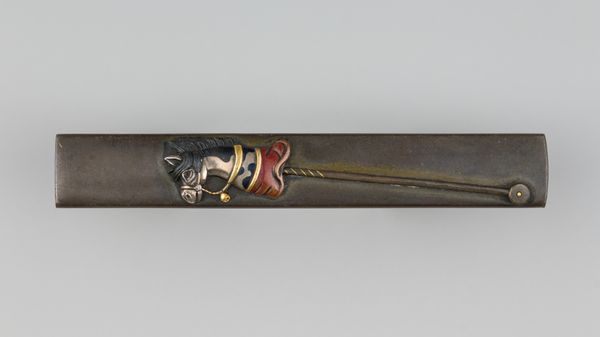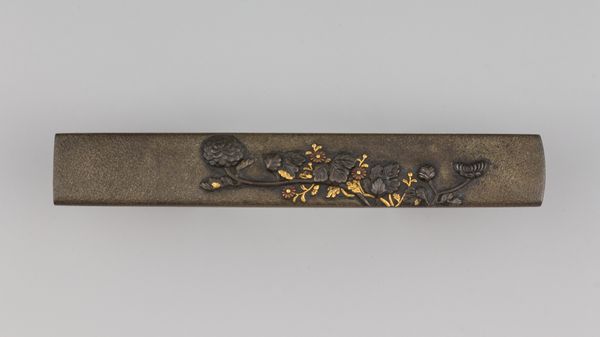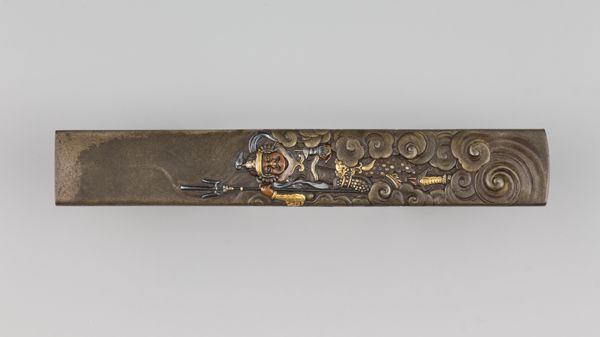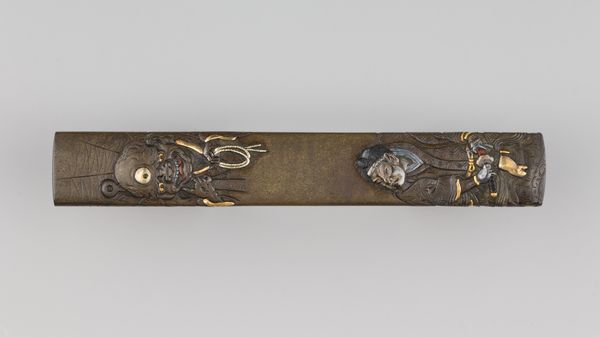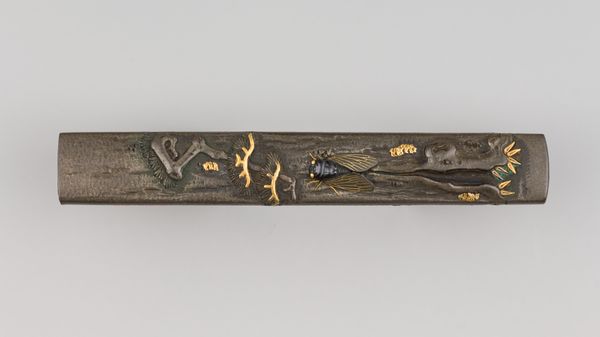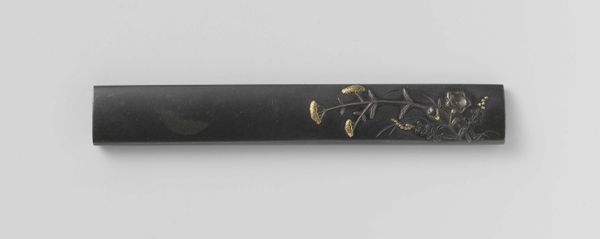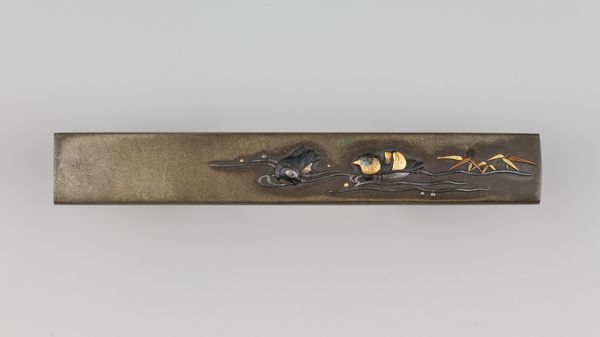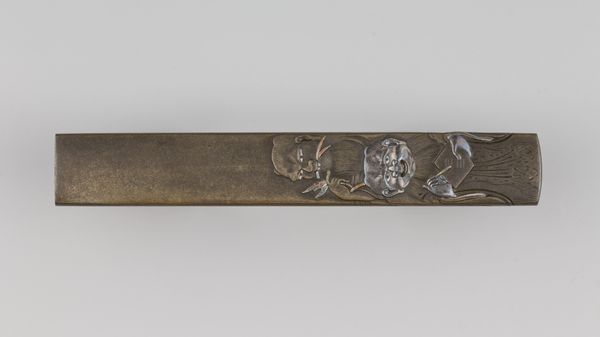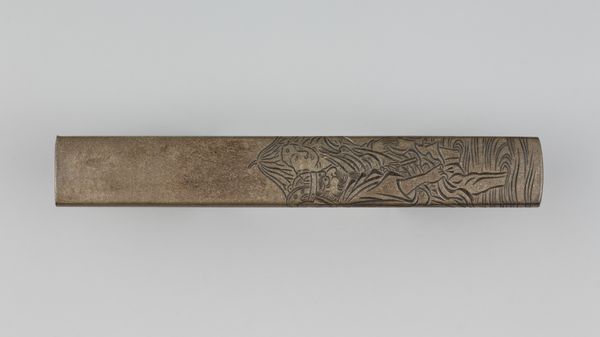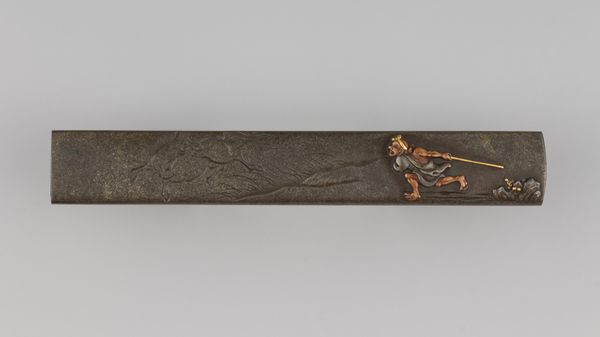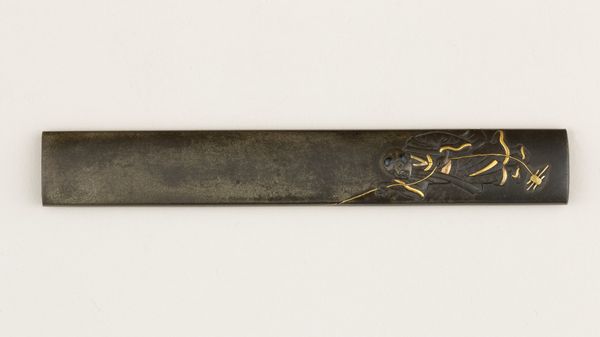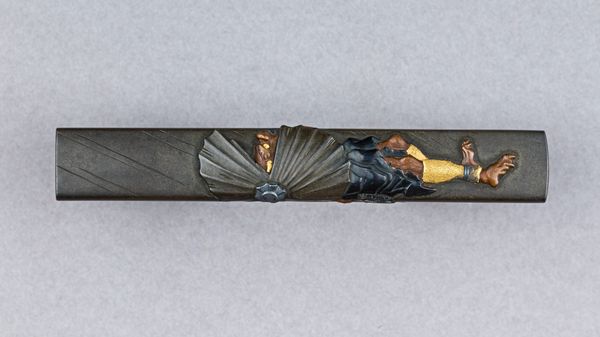
carving, print, metal
#
carving
# print
#
metal
#
asian-art
#
ukiyo-e
#
decorative-art
#
sword
Dimensions: L. 3 13/16 in. (9.7 cm); W. 9/16 in. (1.4 cm); thickness 1/4 in. (0.6 cm); Wt. 1.3 oz. (36.9 g)
Copyright: Public Domain
Curator: This intricately crafted object is a Kozuka, or knife handle, dating back to the 19th century. It's currently part of the collection at the Metropolitan Museum of Art, a striking example of Hamano Naochika’s work in decorative metal arts. Editor: Visually arresting! My immediate reaction is drawn to the contrasting textures and densities; there's a real dynamic between the background and the sculptural elements that gives it a vivid energy. Curator: Indeed. We observe a compelling synthesis of media—metalwork brought into relief. The artist uses carving techniques combined with other processes to essentially sculpt images in metal. Editor: Right, and I'm compelled to consider how this kozuka, fundamentally utilitarian as part of a sword, transcends simple functionality. It presents us with ideas related to the artisan's labor; where the cultural demands for aesthetic quality meet functional objecthood. Curator: Precisely. Its beauty stems, I believe, from a rigorous application of design principles. Note how Naochika arranges the ukiyo-e imagery across the surface. See the ways he’s balanced detail and void to direct our sight? Editor: That brings forth many questions related to the social context of the workshop. Who were the skilled labor collaborators? Also, I can’t help thinking about the sourcing and preparation of these metals, each with its history and geographical roots before becoming embedded in elite culture. Curator: A pertinent line of inquiry. But if we return to formal matters, we note that it is about transformation—of base materials, surely, but more crucially of observation into design. That this everyday object achieves aesthetic transcendence interests me foremost. Editor: Well, I certainly see your point regarding the object's form. For me though, it represents a tangible link between art and craft. Through exploring its origins, it becomes apparent that each Kozuka tells a larger tale about labor practices and systems of consumption that determined which artists could flourish at any given moment! Curator: A story told, yes, but told elegantly, wouldn't you agree? Editor: Agreed. An object of remarkable detail, undoubtedly.
Comments
No comments
Be the first to comment and join the conversation on the ultimate creative platform.

